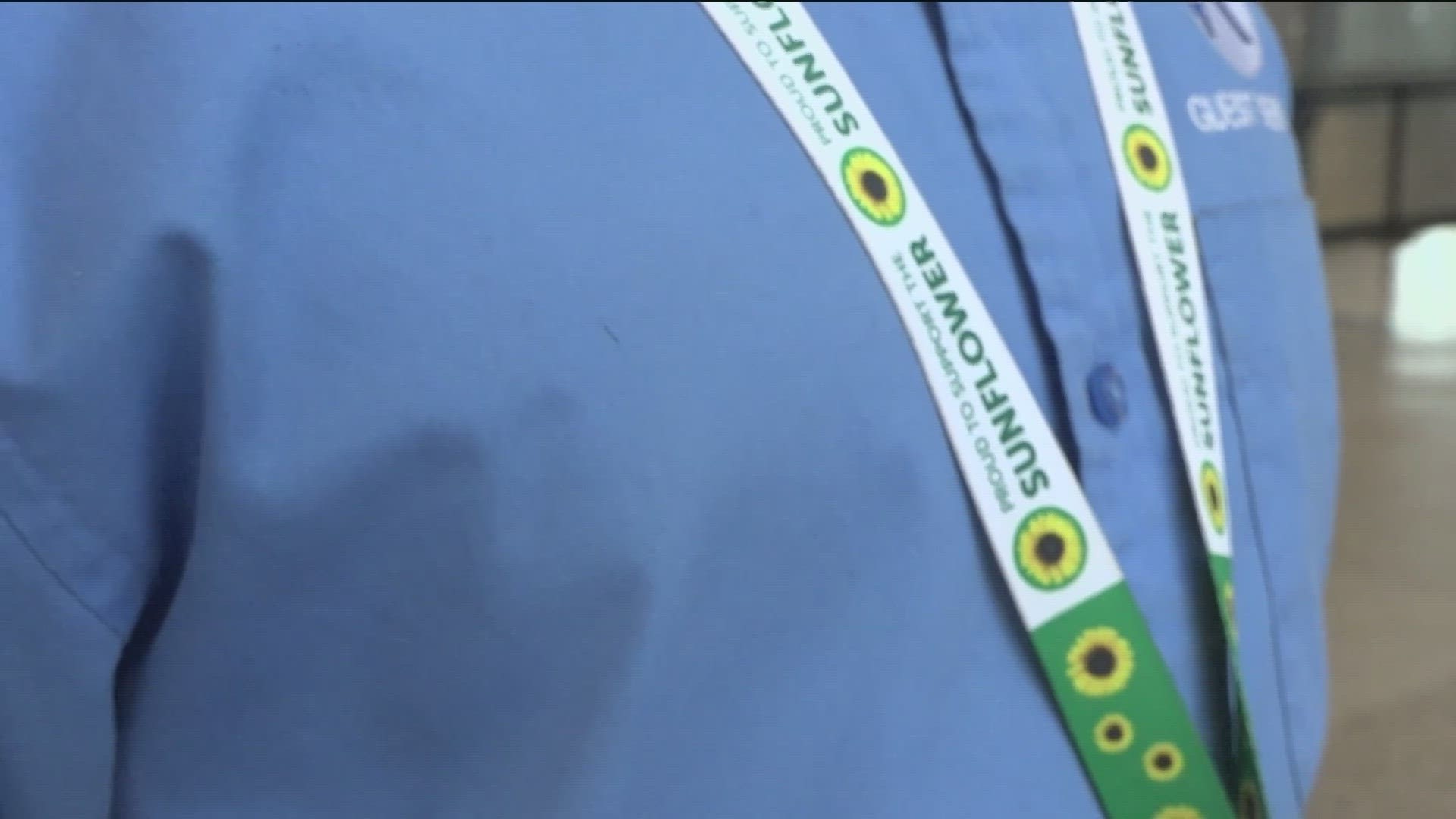AUSTIN, Texas — The Austin-Bergstrom International Airport (AUS) has launched a new service to help accessibility for those with non-visible disabilities.
As of April 1, the airport has implemented the Hidden Disabilities Sunflower Program to help raise awareness for and bring support to those that have non-visible disabilities. A non-visible disability includes autism, anxiety disorders, dementia, Chron's disease, hearing issues and more.
AUS is the fourth airport in Texas and joins more than 90 other airports in North America to create an easier experience of going through terminals for those with hidden disabilities. The program was initially launched in the United Kingdom in 2016 and has since garnered international recognition.
“We are delighted to welcome Austin-Bergstrom International Airport as the fourth airport in Texas to become members of the global Hidden Disabilities Sunflower network. Sunflower wearers travel for many reasons, and the knowledge that barriers are being removed to increase accessibility and inclusion will significantly reduce anxiety and stress for those passengers,” said Paul White, CEO of the Hidden Disabilities Sunflower.
Those who would like to participate in the program can order a sunflower lanyard to be worn while at the airport. According to the release, the green lanyard works as a visual, but discreet, cue to airport staff and other passengers that the person has a non-visible disability and may need more time, support or assistance.
Passengers are able to request a lanyard to be picked up in person at the airport or mailed to their home address ahead of time. Those who are picking up a lanyard at the airport will need to request them through email or by calling AUS Guest Services at 512-530-2414. In-person pickups need to be requested at least 48 hours before coming to the airport, and mailing requests need to be made at least seven business days before the trip.
“AUS is excited to adopt the Hidden Disabilities Sunflower Program, which is an international program recognized at airports across the world that provides tools to help passengers with non-visible disabilities,” said Ramonika Carr, guest services division manager of AUS. “As an international airport, it’s our responsibility to provide services that support every passenger. With that, we know that airports and air travel can be stressful and at times a daunting experience for individuals, especially those who may have a non-visible disability. Ahead of April 1, our Guest Services teams have been educating airport staff and providing guidance on how to identify and assist passengers who may need more help due to a non-visible disability but could feel overwhelmed or lost among the crowd. Thanks to this program, we hope to support the growth and confidence of individuals with non-visible disabilities while they navigate our airport.”
Kamuel Franklin is one of the employees trained at AUS to help.
"Helping people and dealing with people face-to-face, that's what I like to do. I am a people person, so if I am able to able to help somebody, that makes my day. That's all I need to do," Franklin said.
The implementation of the program comes two months after AUS helped change TSA policies regarding passengers that are deaf or hard of hearing. In February, a deaf traveler was taken aside by a TSA agent without an interpreter and was detained without his backpack or cellphone, leaving him without the ability to communicate.
Following this incident, those with accessibility needs will now be directed through security by TSA in a "timely manner."
The Sunflower program is one of the "many new AUS For All services the airport provides to its passengers who have accessibility or mobility needs, or non-visible disabilities," the release detailed. These new services include:
- The Mobility Lounge
- Mobility Assistance Zone
- Mobility tram pilot program
Visit the AUS website for more information about the improvements being made to its accessibility program.

